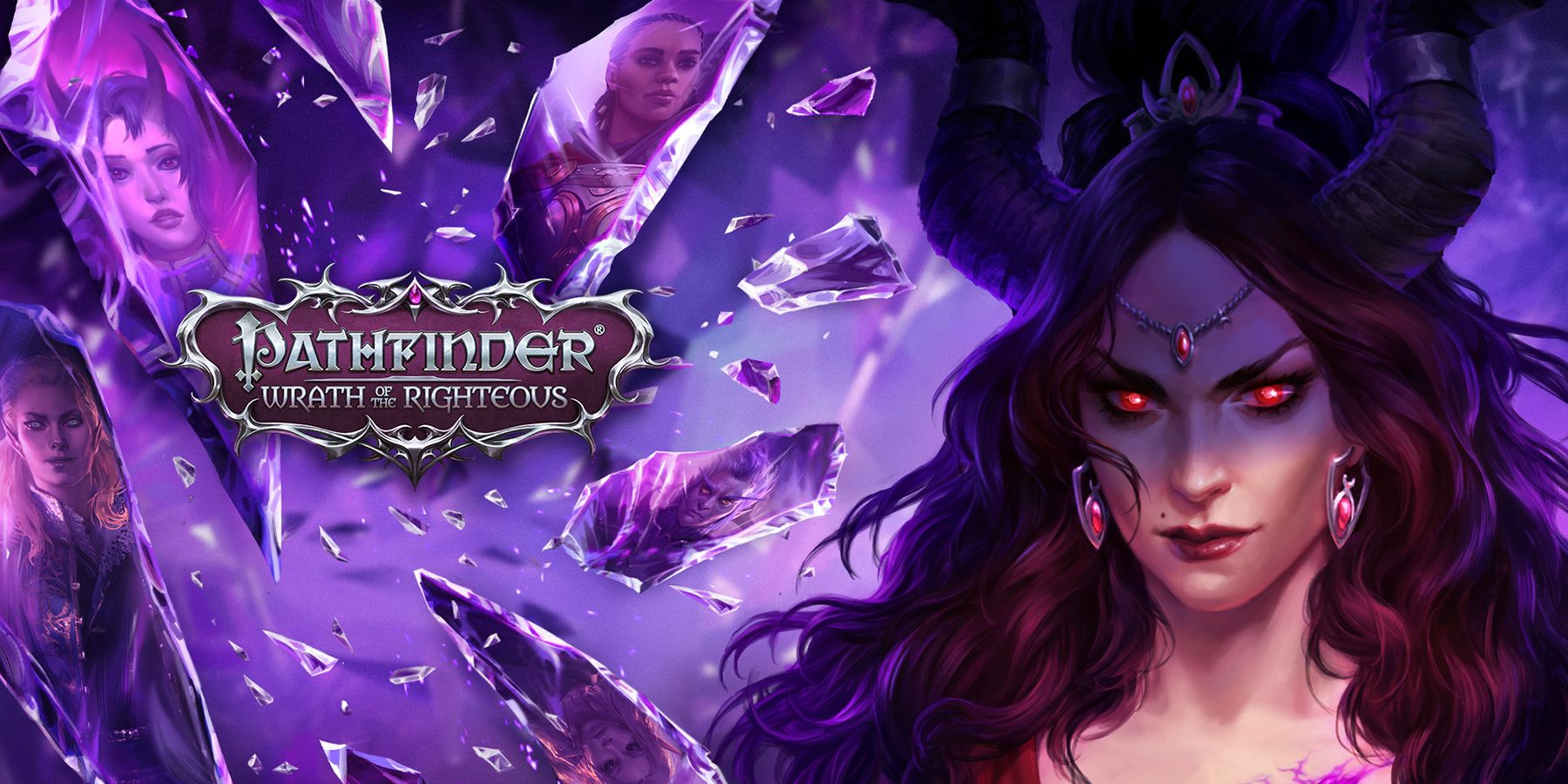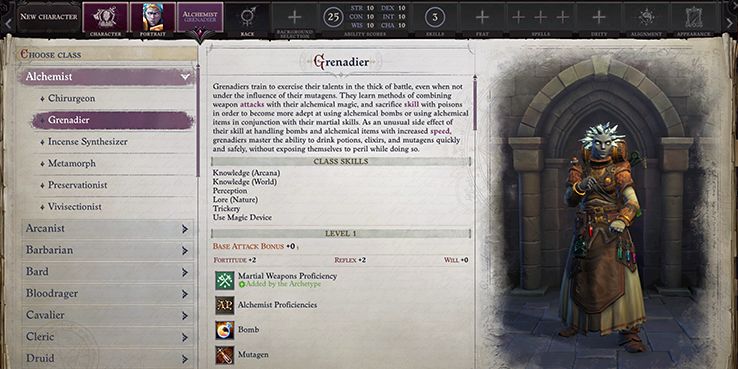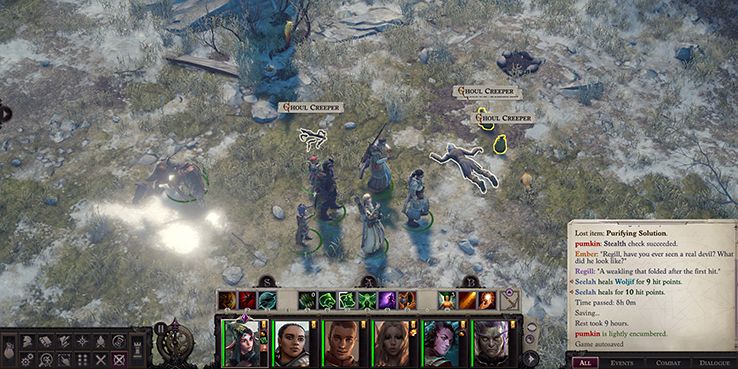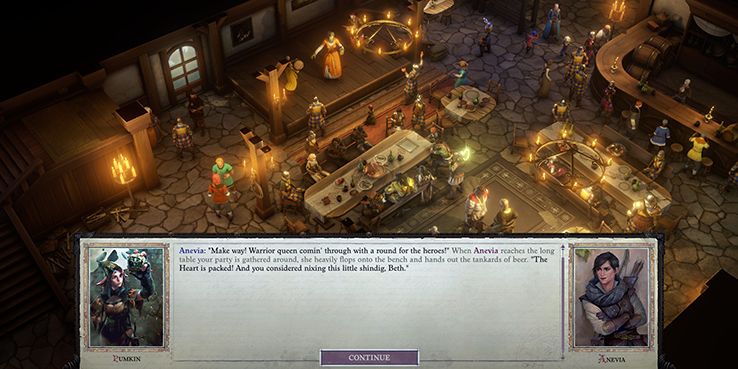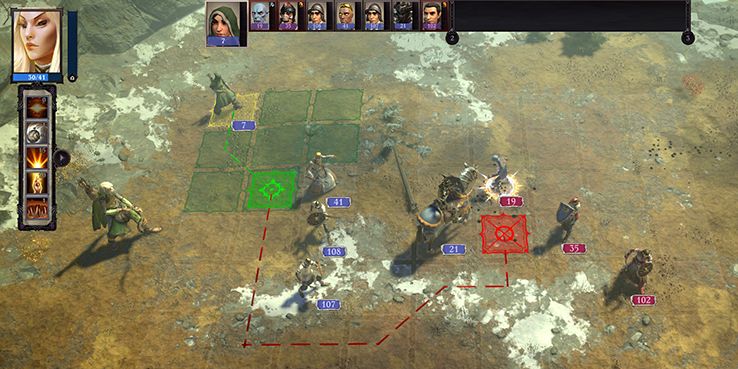For those who loved Larian Studios’ Baldur’s Gate 3 and are still hungry for a bit of CRPG goodness, Pathfinder: Wrath of the Righteous by Owlcat Games offers another thoroughly enjoyable 100-plus hours of dungeon, stat, and lore crawling. Although very similar to Dungeons & Dragons-based games, Owlcat’s two CRPGs are based on the Pathfinder tabletop campaign, which follows a unique ruleset with its own deep and complex mechanics.
Pathfinder: Wrath of the Righteous is the sequel to 2018’s Pathfinder: Kingmaker, set in a realm rich in lore with its own pantheon of gods, detailed history, continents, and cultures. There is a lot to take in, but for the gamer who enjoys this type of thing it will be a satisfying world to dig into rather than a daunting one. On the other hand, players who find themselves lost in the complexity of Baldur’s Gate 3 or who are entirely new to in-depth CRPG experiences may be overwhelmed by Wrath of the Righteous. Some will be thrilled by the challenge; others will become frustrated and quickly look for something else to play.
Players should not expect to jump in, read some tutorials, and successfully stampede their way through the game. Wikis, Reddit posts, and YouTube videos are almost required to maneuver one’s way through leveling up, party management, puzzle-solving, and quest completion. Wrath of the Righteous has 25 base classes, each with multiple subclasses. There are 12 races, each with particular traits and abilities that suit specific classes. And there are nine mythic paths, a secondary layer to character development that parallels standard leveling. It is too easy to accidentally spec into useless abilities, dual class incompatible archetypes, and otherwise waste precious experience points.
Owlcat Games’ second Pathfinder title is no joke. Even the character creation process can be compared to a warp-speed summer college course crammed full of text and statistics that can leave even the practiced player’s head spinning. Luckily, some automation has been added to make the task a bit easier to manage, with the computer taking over leveling of party members if the player wishes.
Basic gameplay is also highly customizable and players can adjust the game’s difficulty level, tweaking everything from the strength of critical hits, to the efficiency of resting, to how deadly character death really is. One frequent complaint about Kingmaker was that the game was balanced around normal difficulty and enemies in harder modes were given a flat boost to ability scores, making the game feel sadistically unfair at times. This seems to have been ameliorated in Wrath of the Righteous, although the four difficulty levels above normal can still be incredibly tough and unforgiving.
The game even offers two combat modes: real-time with pause and turn-based. The game does not necessarily play better in one mode over another; it’s truly player preference. However, some skills feel more suited to a turn-based play style even if it ultimately adds hours onto an already long game.
Yet with all of the customization options, the interface of Wrath of the Righteous could have used some improvement. The biggest misstep is the inability to assign hotkeys to frequently used abilities like sneaking or swapping between weapon sets. There are also a huge number of spells, skills, and abilities in the game, and a teeny tiny action bar that does not have nearly enough room. Yes, it’s possible to add two bars to the side of the screen…where they’re inconveniently far away. And the character portraits at the bottom of the screen only fit the six main party members. However, some classes can summon permanent animal companions, and it’s necessary to click a little arrow and scroll to see their portraits, making it troublesome to track important stats like health, buffs, and debuffs, especially in the heat of battle.
Quest time limits are another welcome change from Kingmaker. In the first game, certain quests had to be completed within a set amount of in-game time or they would fail, sometimes resulting in players having to restart and lose dozens of hours of progress. That has been removed in Wrath of the Righteous, and the time limit of certain quests is instead tied to chapter completion. There is no longer a feeling of being rushed through the game, and players can simply prioritize timed side quests ahead of those that will end the chapter.
As for the game’s story, it is nothing spectacular. That’s somewhat to be expected, though, because in the realm of fantasy and RPGs it feels like almost every story has already been told. In Wrath of the Righteous, a rift to the Abyss has appeared on the world of Golarion, and demons have begun infiltrating the world. The player character has received a mysterious godlike power that has resulted in them being made commander of the forces challenging the demons.
Wrath of the Righteous is effectively divided into two parts. The first part is the extremely engaging story mode in which the player leads a party of six adventurers, collects loot, completes quests, and progresses toward a clear end goal. The second is the crusade mode, which is inspired by the strategic, turn-based, troop management elements of the Heroes of Might and Magic series and provides a change of pace from the usual real-time-with-pause CRPG fare. The two game modes complement one another nicely, allowing players to switch to crusading when questing begins to feel stale, for example.
As Commander of the Fifth Crusade, players will be tasked with recruiting soldiers and growing an army to fight off the demon invasion and, by the end of the game, players will be leading a force of thousands. Advancing in the game’s story mode will sometimes require clearing the way with Crusade forces first, which sounds good on paper. However, it’s possible to reach pivotal battles that are necessary to progress the main story with an army that’s too weak to succeed, which means reloading and losing hours of work.
Some people may find the crusade mode an unnecessary diversion that is not nearly fleshed out enough to justify its presence in the game. In fact, it may turn some players off of the game entirely. The fights, even with an array of different enemies, can begin to feel repetitive and excessively drawn out. While there is an automatic mode, choosing not to manually engage in crusade battles means missing out on some nice rewards, side quests, and even progress for a few mythic paths. And, unlike story mode, there is no difficulty setting that would enable uninterested players to smash through fights more quickly. So people who pick up the game looking for a CRPG only to find themselves forced to also play a watered down HOMM clone may be unpleasantly surprised.
In a game this massive, it’s inevitable that players will encounter the occasional bug. Usually, these are minor annoyances like mislabeled items, characters spinning in circles, or stats not updating correctly until a relaunch. Wrath of the Righteous seems to have more glitches than is acceptable, however, and some of them make the gameplay different than intended. Player comments have revealed that some computers, even those that surpass the recommended specs, can have trouble handling the game and will at times whir up like a jet engine. And given the immense number of customization options, it can be difficult to pinpoint the exact cause. Others have also experienced game-breaking bugs that require reloading a save and losing hours of progress. Though there have been regular patches since Wrath of the Righteous released for PC on September 2, it still at times feels like driving a shiny new car that randomly sputters and backfires.
Despite the negatives, Pathfinder: Wrath of the Righteous is overall an exceptional and colossal CRPG, a true spiritual successor to the original Baldur’s Gate and Icewind Dale titles. For those who love this type of game — the challenges, micromanagement, deep lore, and stat tracking in a fantasy RPG setting — Owlcat Games’ latest offering will more than satisfy. Gamers hoping for a less intense, less mentally demanding, more polished RPG experience would be better off looking elsewhere.
Pathfinder: Wrath of the Righteous is available on PC and will be released on Xbox One and PS4 on March 1, 2022. Game Rant was provided a code for the PC version.

